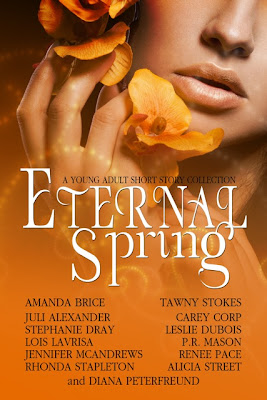I’ve always had a thing for bad girls, and they don’t get any badder than the Queens of the Ptolemaic dynasty. They were schemers, seductresses and sorceresses. They were poisoners, sexpots, and political powerhouses. I’ve always wondered why.
Maybe it’s that well-behaved women seldom make history--so we only hear about the bad apples. But maybe they weren’t so bad after all. Maybe they were no worse than the they needed to be to survive.
It was that thought that led me to write about the early life of Queen Arsinoe II, one of history’s most notorious women. Princess Arsinoe was the daughter of Ptolemy, the Greek-Macedonian Pharaoh of Egypt. She grew up in her father’s harem, jostling for status with her many half-siblings. Then she was married off and sent away with no real hope of ever returning home.
But she did return home...and went on to become the first female Pharaoh of the Ptolemaic dynasty.
It was her rise to power that fascinated me because I tend to believe that people are born basically good--that if they turn out bad, something pushed them in that direction. So I kept wondering how a girl could grow up to be so shrewd, so ruthless, and ultimately, triumphant.
Maybe it’s that well-behaved women seldom make history--so we only hear about the bad apples. But maybe they weren’t so bad after all. Maybe they were no worse than the they needed to be to survive.
It was that thought that led me to write about the early life of Queen Arsinoe II, one of history’s most notorious women. Princess Arsinoe was the daughter of Ptolemy, the Greek-Macedonian Pharaoh of Egypt. She grew up in her father’s harem, jostling for status with her many half-siblings. Then she was married off and sent away with no real hope of ever returning home.
But she did return home...and went on to become the first female Pharaoh of the Ptolemaic dynasty.
It was her rise to power that fascinated me because I tend to believe that people are born basically good--that if they turn out bad, something pushed them in that direction. So I kept wondering how a girl could grow up to be so shrewd, so ruthless, and ultimately, triumphant.
That’s why I wrote the story THE PRINCESS OF EGYPT MUST DIE, which imagines the events that would change Princess Arsinoe and turn her into a powerful woman. It’s a romantic story, though very dark, and I worried it might make little girls cry...but tears are what make us into women, aren’t they? And maybe tears are what make villains, too.
Are there any female villains you can think of in history who you actually kind of like?
(I’m pleased to announce that the story is now available FOR FREE as part of the Young Adult Anthology, ETERNAL SPRING, on Amazon.com, where it sits at #8 on the children’s literature short story bestseller list at the time of this writing. It’s also free on Kobo, and Smashwords. And I’m so honored to share the anthology with twelve other fantastic authors.)
Stephanie Dray is a multi-published RITA-award nominated author of historical women’s fiction and fantasy. Using the transformative power of magic realism, she illuminates the stories of women in history so as to inspire the young women of today. She remains fascinated by all things Egyptian and has–to the consternation of her devoted husband–collected a house full of cats and ancient artifacts.
Are there any female villains you can think of in history who you actually kind of like?
(I’m pleased to announce that the story is now available FOR FREE as part of the Young Adult Anthology, ETERNAL SPRING, on Amazon.com, where it sits at #8 on the children’s literature short story bestseller list at the time of this writing. It’s also free on Kobo, and Smashwords. And I’m so honored to share the anthology with twelve other fantastic authors.)
Stephanie Dray is a multi-published RITA-award nominated author of historical women’s fiction and fantasy. Using the transformative power of magic realism, she illuminates the stories of women in history so as to inspire the young women of today. She remains fascinated by all things Egyptian and has–to the consternation of her devoted husband–collected a house full of cats and ancient artifacts.




8 comments:
I adore this story (and this anthology, obviously) and I'm so glad it's finally out in the world for other people to read!
I also am a big fan of this story. Thanks for the perspective behind it.
Thanks so much for having me here today, Gabrielle!
Also, Diana, on a shallower note, I love the haircut!
Stephanie is truly a masterful storyteller. Her story drew me in immediately. I adored her story. This anthology was so much fun, and working with such talented authors was a blast!
Great post and awesome story. So happy to be a part of this anthology.
Frankly, I am history-impaired. Never could stomach it through all my years of school. But that turns out to be a good thing, since I come to story's like this one (and I love, love, love "The Princess of Egypt Must Die'!) and have a brand new appreciation for and fascination with these historic characters. So while I don't have a historic villain that I actually like (cos my knowledge doesn't extend that far) I'm happy to discover them now, and grateful to authors like Stephanie for giving me a chance to learn about them.
I love historical fiction, and, Stephanie, your story in Eternal Spring really came alive for me. Fab post! I'm so happy to be part of this anthology.
Post a Comment